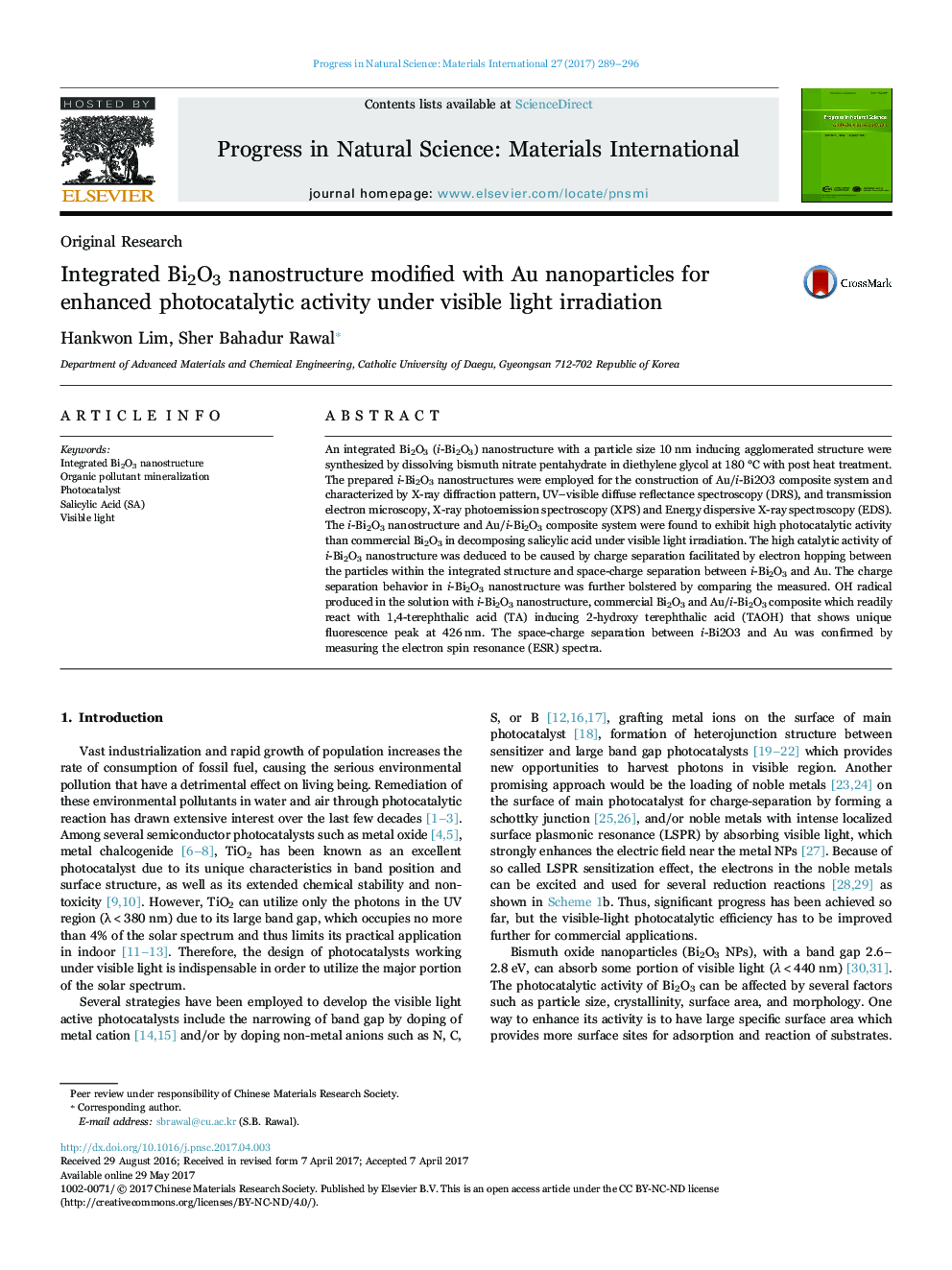| Article ID | Journal | Published Year | Pages | File Type |
|---|---|---|---|---|
| 5450433 | Progress in Natural Science: Materials International | 2017 | 8 Pages |
Abstract
An integrated Bi2O3 (i-Bi2O3) nanostructure with a particle size 10 nm inducing agglomerated structure were synthesized by dissolving bismuth nitrate pentahydrate in diethylene glycol at 180 °C with post heat treatment. The prepared i-Bi2O3 nanostructures were employed for the construction of Au/i-Bi2O3 composite system and characterized by X-ray diffraction pattern, UV-visible diffuse reflectance spectroscopy (DRS), and transmission electron microscopy, X-ray photoemission spectroscopy (XPS) and Energy dispersive X-ray spectroscopy (EDS). The i-Bi2O3 nanostructure and Au/i-Bi2O3 composite system were found to exhibit high photocatalytic activity than commercial Bi2O3 in decomposing salicylic acid under visible light irradiation. The high catalytic activity of i-Bi2O3 nanostructure was deduced to be caused by charge separation facilitated by electron hopping between the particles within the integrated structure and space-charge separation between i-Bi2O3 and Au. The charge separation behavior in i-Bi2O3 nanostructure was further bolstered by comparing the measured. OH radical produced in the solution with i-Bi2O3 nanostructure, commercial Bi2O3 and Au/i-Bi2O3 composite which readily react with 1,4-terephthalic acid (TA) inducing 2-hydroxy terephthalic acid (TAOH) that shows unique fluorescence peak at 426 nm. The space-charge separation between i-Bi2O3 and Au was confirmed by measuring the electron spin resonance (ESR) spectra.
Related Topics
Physical Sciences and Engineering
Materials Science
Electronic, Optical and Magnetic Materials
Authors
Hankwon Lim, Sher Bahadur Rawal,
